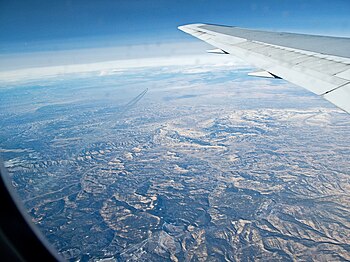This article needs additional citations for verification. (January 2009) |
In air traffic control, separation is the name for the concept of keeping an aircraft outside a minimum distance from another aircraft to reduce the risk of those aircraft colliding, as well as prevent accidents due to secondary factors, such as wake turbulence. Separation can also apply to terrain, obstacles, and controlled airspace, wherein an aircraft must stay at a minimum distance from a block of airspace; as an example, all aircraft must be approved by the controller who "owns" the airspace before the aircraft is approved to enter that sector.

Air traffic controllers apply rules, known as separation minima, to do this. Pairs of aircraft to which these rules have been successfully applied are said to be separated: the risk of these aircraft colliding is therefore remote. If separation is lost between two aircraft, they are said to be in a conflict.
When an aircraft passes behind or follows another aircraft, wake turbulence minima are applied due to the effect of the wingtip vortices of the preceding aircraft on the following aircraft. These minima vary depending on the relative size of the two aircraft. This is acute on final approach with a smaller aircraft following larger aircraft.